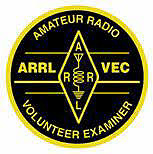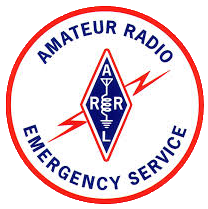As amateur radio operators we may involve ourselves in public service in many different ways, whether as a storm spotter, part of a search team, as a stop on bike rides or runs, or delivering messages when normal communications systems are overloaded. But the one thing all of these tasks have in common is the fact communications is often managed via a net.
Depending upon the nature of the emergency there may be several concurrent nets running at different levels. Here are some examples:
Weather Nets
When the National Weather Service activates their storm spotters they will often activate our regional linked repeater network. The Linked Repeater Network consists of a group of repeaters that have secondary transceivers on them, allowing them to link together to create an expanded area where any traffic on any one repeater is heard on all.
However, if every amateur radio storm spotter reported on that net it would quickly become overloaded. Additionally, there is often the need to communicate local information that is not appropriate for a regional net. The solution is for each county or city to operate a local net and relay weather conditions that meet NWS reporting requirements.
This structure allows local nets to pass non-critical data that may be useful to others in the local area but no necessarily to the NWS. For instance, we may discuss where storm conditions appear to be worsening and call for reports form there, or even determine if there is a spotter willing to deploy there. It also provides a way to filter reports that do not meet NWS reporting requirements.
In the case of NWS nets, there is one large net, handling reportable traffic, with several smaller nets operating within the same geographical area collecting and relaying the data. Usually one or more person is designated as a “liaison” to the NWS net and is responsible for relaying traffic between the two nets.
Public Service Nets
While a Weather Net will often have a liaison to the National Weather Service, a Public Service net, like those used for bike rides, foot races, or other planned events, usually only has a single net with no liaisons to other nets. Why? Well, because in these cases the net provides a structure for operators stationed along the route to report in.
While a Public Service net may not have liaisons to other nets, there will be operators functioning as liaisons to the served organization, and possibly other support groups. For instance, the EMTs might have an operator assigned to them in case there is an incident along the route requiring medical assistance. A liaison to the EMTs can immediately relay the report to the EMTs, or allow them to communicate directly with the reporting station if necessary.
Many endurance events also include a “pick up” service to gather those who may have dropped out of the race due to minor injuries, fatigue, or some other reason. Operators are sometimes deployed with these individuals to more easily facilitate locating and retrieving the participants in need.
Stationing operators along an event route is not uncommon, as races, trail runs, and other events often take place in areas with spotty cell phone coverage, and the participants often don't have cell phones with them. Technology like APRS and D-STAR allow stations traversing the route to immediately report their GPS position, which can be displayed on a map for immediate location identification.
There are other circumstances that will require liaisons to multiple nets, such as a local disaster that temporarily disrupts telephone communications of a hurricane Opal type event. In these instances there may be the need to pass digital data, health and welfare traffic from shelter evacuees to family, weather reports to the National Weather Service, Emergency Management traffic from the local EMA to GEMA, Hospital traffic, etc. We will discuss these nets in future presentations.
Disaster / Emergency Nets
During an actual emergency, or during a Simulated Emergency Test (a SET is an annual test of emergency communications capabilities), there may be multiple nets operating simultaneously or on differing schedules, performing different functions. Nets fall into three overall categories: Tactical, Traffic, and mixed.
A Traffic net is utilized to pass written messages, much like a telegram. The message might be between two local stations, another part of the state, across the country, or the world. Local traffic can be directly passed over the repeater, but in some cases it may need to be relayed to the National Traffic System (NTS), a network that operates on HF to pass formal traffic world-wide, to be delivered to non-local recipients. NTS traffic is normally communicated using ARRL Radiograms. We'll talk about the National Traffic System on a future net.
A Tactical Net (usually run on a repeater) exists for the purpose of passing informal traffic, and is the most common type of net. This type of net will often be utilized to coordinate shelters, supply distribution locations, damage assessment teams, and other such activities. Tactical nets are normally used to communicate information needed moment to moment. A severe weather net is an example of a tactical net.
Along with the Tactical Net, there may also be a Local Traffic Net, operating on another repeater or frequency. This would normally be the case when conventional communications, such as phone and internet, are unavailable.
An example of a mixed net is when there is a low volume of formal traffic and it is handled on what is primarily a Tactical Net. It is also possible that the Tactical Net will be used to initiate traffic relaying with the Net Control Station directing the involved stations to move to another frequency.
We'll discuss how actual tactical and message traffic will be passed during operations during future presentations on the National Traffic System and Simulated Emergency Tests.




